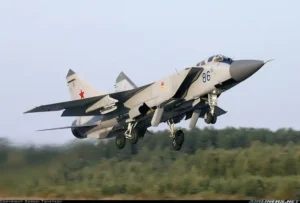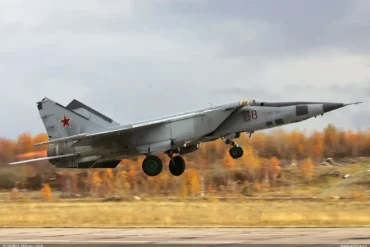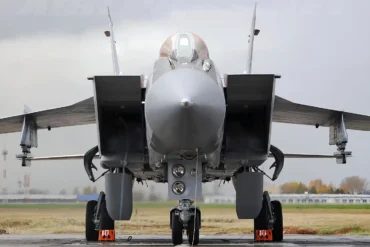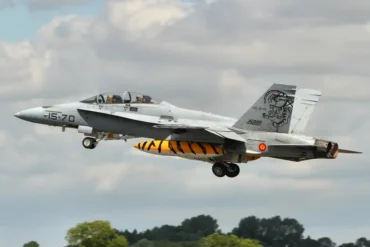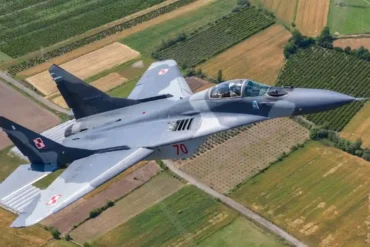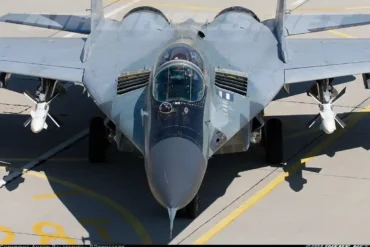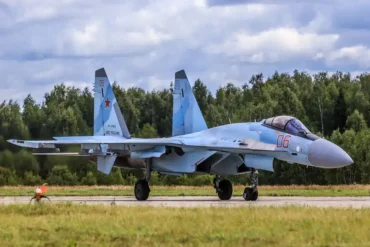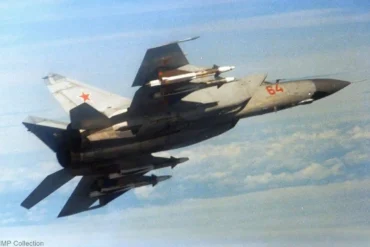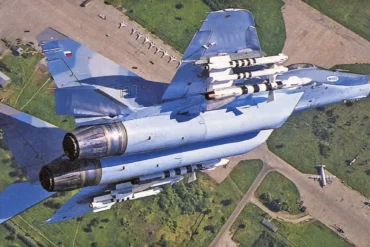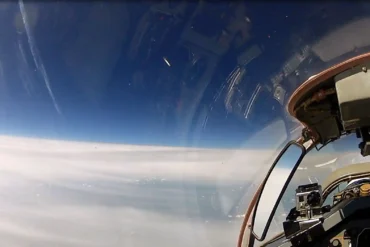The MiG-31 Foxhound stands as one of the most remarkable feats of Soviet aerospace engineering, embodying raw power, speed, and altitude capabilities that are still impressive by modern standards. This supersonic interceptor, developed during the Cold War, serves as a testament to the cutting-edge technology of the time, featuring sophisticated avionics and an unmatched operational ceiling that continues to make it a dominant force in military aviation. In this comprehensive analysis, we will explore the MiG-31’s max altitude and its impressive performance characteristics, along with its role in modern strategic defense.
Introduction to the MiG-31 Foxhound
The MiG-31, also known as the Foxhound, is a successor to the MiG-25 Foxbat and was developed by the Soviet Union in the 1970s to counter the growing threat of high-altitude bombers and advanced reconnaissance aircraft. The aircraft’s primary mission is intercepting and destroying high-speed, high-altitude targets, and its role has evolved to include being the launch platform for Kinzhal hypersonic missiles. The MiG-31 continues to be a formidable asset in the Russian Air Force, thanks to its advanced radar systems, high-speed capabilities, and extreme operational ceiling.
MiG-31 Max Altitude: The Record-Breaking Heights
One of the standout features of the MiG-31 is its maximum altitude. In 1977, the MiG-31 achieved an astounding absolute maximum altitude of 37,650 meters (123,520 feet). This record remains a significant achievement in the world of aviation, even in the context of modern supersonic aircraft. At such altitudes, the aircraft operates far above the typical cruising altitudes of commercial airliners, entering the realms of near-space.
This record was set by Alexander Fedotov, a legendary Soviet test pilot, whose name is synonymous with aviation excellence. He was known for pushing aircraft to their absolute limits, and his feats with the MiG-31 are particularly notable. The aircraft’s ability to reach such heights is not just a demonstration of its engine power but also of its robust structural integrity, which allows it to perform well in the harsh conditions of the upper atmosphere.
What Makes the MiG-31’s Max Altitude Possible?
The remarkable altitude performance of the MiG-31 is primarily due to its powerful tumanskiy D-30F6 engines, which provide it with significant thrust. These engines are designed to operate efficiently at extremely high altitudes and speeds, ensuring that the aircraft can achieve and sustain supersonic flight even at the edge of space. The MiG-31 also benefits from its delta-wing design, which provides superior lift and stability at high altitudes.
The aircraft’s avionics and systems are optimized for high-altitude flight as well. For example, the MiG-31 is equipped with the Zaslon radar system, one of the first phased-array radars deployed on an operational aircraft. This system allows the MiG-31 to maintain a high level of situational awareness at great heights, ensuring it can intercept and destroy targets, including high-flying bombers and reconnaissance planes, with deadly accuracy.
Max Speed and Altitude Performance
While altitude is one of the MiG-31’s most impressive attributes, its speed is just as remarkable. The aircraft is capable of reaching speeds of Mach 2.8 at high altitudes, which is roughly 3,000 kilometers per hour (1,864 miles per hour). At Mach 2.8, the MiG-31 is one of the fastest combat jets in the world, able to outpace most of its adversaries with ease.
In fact, the MiG-31’s ability to cruise at Mach 2.3 at high altitudes is part of the reason it is so effective as an interceptor. The aircraft’s high-speed capability means it can quickly close the distance between itself and a target, whether it’s a hostile bomber or an incoming missile.
The Interplay of Speed and Altitude
The MiG-31’s ability to reach and sustain such high speeds at extreme altitudes is a testament to its aerodynamic design and engine power. However, there is a complex relationship between speed and altitude. As altitude increases, the air becomes thinner, and engine performance is generally reduced. To counteract this, the MiG-31 is equipped with a sophisticated air intake system that ensures optimal airflow to its engines, even in the rarified air of the upper atmosphere.
At altitudes above 30,000 meters (98,000 feet), most aircraft struggle with engine performance, but the MiG-31’s turbofan engines are capable of operating in these conditions without significant loss of thrust, allowing it to maintain supersonic speeds.
Role of the MiG-31 in Modern Warfare
In addition to its stunning altitude and speed capabilities, the MiG-31 plays a critical role in Russia’s defense strategy. Its primary mission remains the interception of high-altitude, high-speed targets, including strategic bombers, spy satellites, and even cruise missiles. The Foxhound is one of the few aircraft capable of reaching altitudes that allow it to track and neutralize targets in near-space.
Moreover, the MiG-31 is a key platform for launching hypersonic weapons, particularly the Kinzhal missile, which has a range of over 2,000 kilometers (1,243 miles) and can reach speeds exceeding Mach 10. This makes the MiG-31 a formidable tool in modern strategic deterrence.
The MiG-31 in Air Defense Networks
The MiG-31’s radar capabilities make it an essential asset in air defense networks. The Zaslon radar system allows the MiG-31 to detect and engage targets at long ranges, well before they enter the reach of other defensive assets. This capability makes it invaluable in the early-warning interception of enemy aircraft or missiles, providing time for further defensive measures to be enacted.
The MiG-31’s long-range radar-guided missiles, such as the R-33 and R-37, provide it with the ability to engage targets from a distance, often before the adversary even realizes they are under threat. This long-range engagement capability is especially crucial for defending Russian airspace against stealth bombers and hypersonic missiles.
Upgrades and Evolution of the MiG-31
Since its introduction in 1981, the MiG-31 has undergone several upgrades, with the most notable being the MiG-31BM variant. The MiG-31BM incorporates more advanced avionics, a more powerful radar, and an enhanced weapons system. These upgrades have extended the aircraft’s service life and allowed it to remain relevant in modern air combat.
In the MiG-31BM upgrade, the radar system was significantly enhanced, providing it with the ability to track 30 targets simultaneously and engage up to six targets at once. Additionally, the MiG-31BM can fire the R-37 missile, which is designed to target and destroy high-speed aircraft, including AWACS (Airborne Warning and Control System) aircraft and satellites.
The MiG-31’s continued development underscores its strategic importance to Russia and its ability to adapt to the evolving nature of air combat.
Conclusion: The MiG-31 and Its Enduring Legacy
The MiG-31 Foxhound remains one of the most remarkable combat aircraft in the world, with an altitude ceiling that few can match. The aircraft’s max altitude of 37,650 meters set in 1977 still stands as a testament to Soviet engineering ingenuity, and the MiG-31’s speed and capability to operate in the rarefied air at such heights ensure its continued relevance in modern military aviation.
The MiG-31 is not only a symbol of the technological prowess of the Soviet Union but also a critical component of Russia’s modern strategic defense capabilities. Whether serving as a high-altitude interceptor or launching hypersonic missiles, the MiG-31’s legacy as a premier interceptor aircraft remains unchallenged.
As technology continues to evolve, the MiG-31’s extraordinary altitude performance and versatile operational role ensure that it will remain an important player in the skies for years to come.
